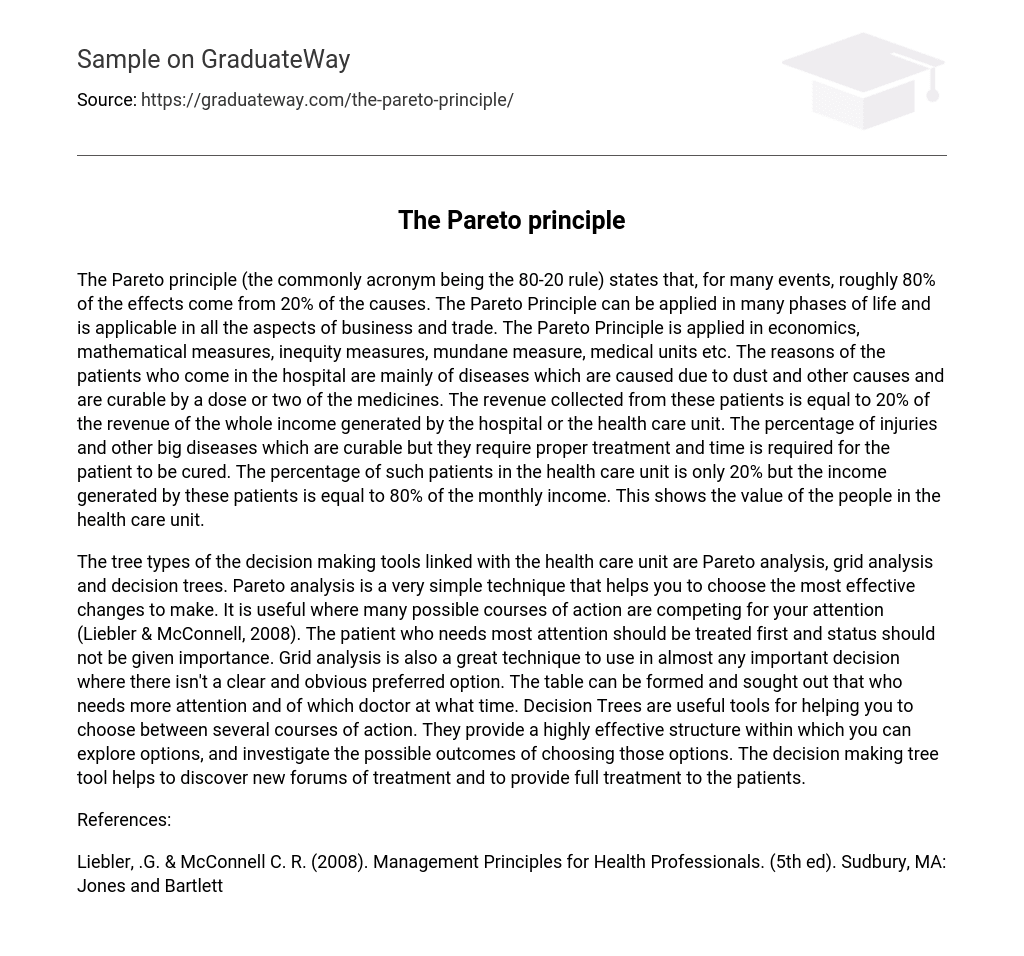The Pareto principle (the commonly acronym being the 80-20 rule) states that, for many events, roughly 80% of the effects come from 20% of the causes. The Pareto Principle can be applied in many phases of life and is applicable in all the aspects of business and trade. The Pareto Principle is applied in economics, mathematical measures, inequity measures, mundane measure, medical units etc. The reasons of the patients who come in the hospital are mainly of diseases which are caused due to dust and other causes and are curable by a dose or two of the medicines. The revenue collected from these patients is equal to 20% of the revenue of the whole income generated by the hospital or the health care unit. The percentage of injuries and other big diseases which are curable but they require proper treatment and time is required for the patient to be cured. The percentage of such patients in the health care unit is only 20% but the income generated by these patients is equal to 80% of the monthly income. This shows the value of the people in the health care unit.
The tree types of the decision making tools linked with the health care unit are Pareto analysis, grid analysis and decision trees. Pareto analysis is a very simple technique that helps you to choose the most effective changes to make. It is useful where many possible courses of action are competing for your attention (Liebler & McConnell, 2008). The patient who needs most attention should be treated first and status should not be given importance. Grid analysis is also a great technique to use in almost any important decision where there isn’t a clear and obvious preferred option. The table can be formed and sought out that who needs more attention and of which doctor at what time. Decision Trees are useful tools for helping you to choose between several courses of action. They provide a highly effective structure within which you can explore options, and investigate the possible outcomes of choosing those options. The decision making tree tool helps to discover new forums of treatment and to provide full treatment to the patients.
References:
Liebler, .G. & McConnell C. R. (2008). Management Principles for Health Professionals. (5th ed). Sudbury, MA: Jones and Bartlett





